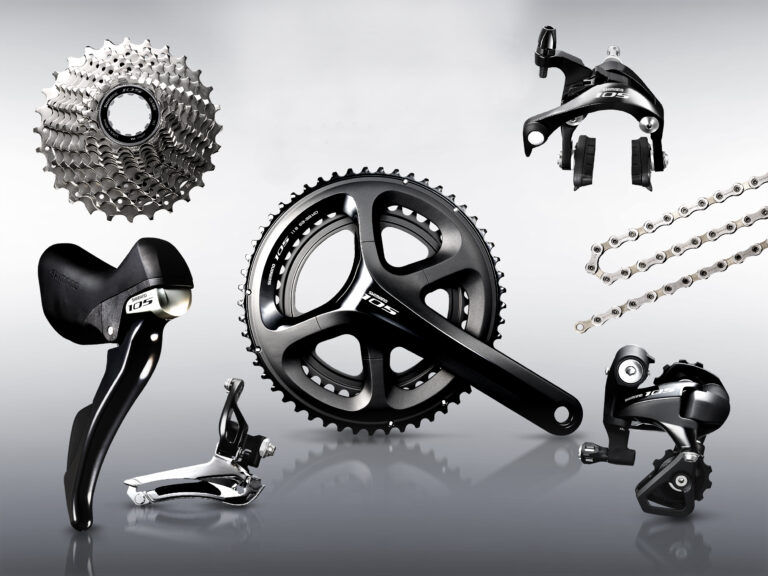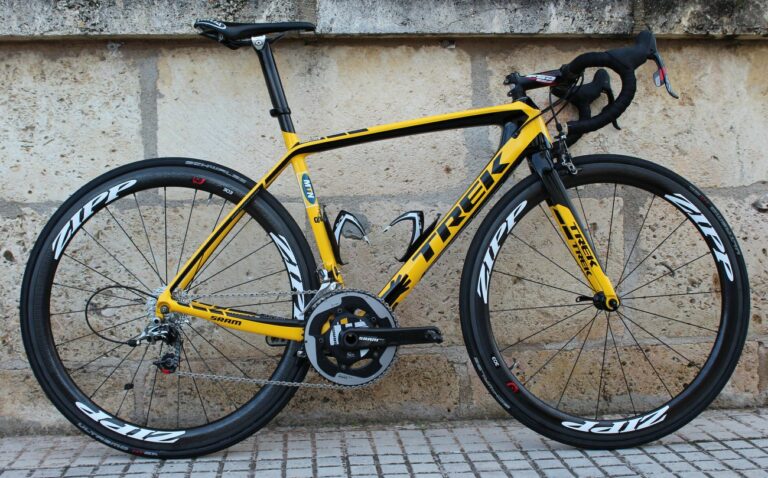The headset is one of three main bearings on the bike, alongside those in the bottom bracket and the wheels.
Like all bearing systems, those that hold the fork steerer securely, now typically cartridge units, are subject to wear, and the clamping mechanism that holds them in place – the almost-universal Ahead system demonstrated here – can become loose.
In this latest instalment of our video maintenance series, Jon Hayes, mechanic at independent bike shop, Ride, demonstrates adjusting the headset for two scenarios: the quick fix, and the full inspection.
The quick fix
We’ve all experienced the judder at the head tube as we set the bike down after turning it around or pulling it from the rack – usually with several riding buddies on the driveway waiting not so patiently to ride. The quick fix procedure demonstrated here is all you need to get rolling.
Jon begins by selecting two Allen keys from the tool kit: a 5mm for the stem clamp bolts and a 6mm for the top cap. He loosens the clamp bolts on the stem so that it can move freely on the fork steerer tube, and then adjusts the bolt in the top cap. ‘The top cap is what you use to pre-load the bearings,’ Jon explains. ‘By tightening the top cap, it’s pulling the stem down onto the headset bearings, essentially squeezing the whole thing shut.’
Jon tightens the top cap gently before applying the front brake and pushing forward on the handlebars to ensure the ‘play’ in the headset has been removed. ‘If you over tighten the top cap, you’ll compress the headset bearings so much that you might find the steering’s impeded,’ he warns.
Satisfied that the top cap is sufficiently tight, he checks the alignment of the handlebars, using the dropouts as a siting point, and retightens the stem pinch bolts.
The full inspection
Headsets do not come loose of their own volition. While it’s possible to swiftly tighten a loose headset, a closer inspection is required to discover the underlying cause.
Jon places the bike in the work stand, and removes the front wheel. He also removes the front brake, using a 5mm Allen key, as a precursor to removing the fork. He loosens the stem pinch bolt and removes the top cap, allowing the handlebars to be lifted from the fork steerer. ‘By not having the front brake attached, it means we can do what we like with the fork,’ says Jon, setting the item to one side.
The next items to be removed are the headset bearing top cap (a separate item to the stem top cap), the upper headset bearing and the lower headset bearing. Jon seizes the opportunity to clean the inside of the head tube and the fork steerer, and to make a visual inspection of both.
Jon turns his attention next to the bearings, wiping them clean with a rag. ‘Try and be thorough with this,’ he advises. ‘If you’ve gone to the trouble of taking everything apart, you might as well do a reasonable job.’
Having completed his inspection, Jon deduces that the headset is likely to have worked loose on rough ground or cattle grids. He finds nothing untoward in the headset mechanism, but emphasises the ease with which the inspection has been made – a short amount of time well spent. ‘It’s quite scary-looking – it’s an integral part of the frame – but there’s no reason why you can’t get in there and get involved,’ he says.
Using a grease gun, Jon applies a small amount of grease to each of the bearing surfaces and the fork crown race. The bearings are next to be returned to their position, followed by the top cap. Jon is careful to ensure the cables pass either side of the steerer tube as he returns to the fork to the head tube.
“Remember the orientation,’ Jon cautions as he returns the various headset components. ‘Top cap, spacer, stem, top cap.’ He winds in the top cap by hand, and uses the 5mm allen key to reposition the front brake. The front wheel is the last item to be put back into place.
With all components returned, it’s time to remove the bike from the work stand and check the function of the headset. Using the 6mm allen key, he gently tightens the stem top cap to pre-load the bearings, and then uses the 5mm allen key to tighten the stem bolts.





